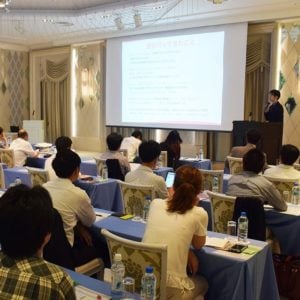Pioneering where the big players can’t reach.
However, the emergence of large malls and other facilities within a trade area poses a major threat to local stores.
Creating products to strengthen the connection with customers in preparation for what is to come (see also “What about stores doing an online store?”)
If you are prepared and your client list is of a good size and quality, you may feel comfortable, but in many cases you may not be prepared to that extent.
The so-called core needs (in the case of groceries, cheap, fresh, easy, etc.) are not easily met by large companies that purchase in large quantities and have strong distribution.
Moreover, to fight especially at a low price, unless you have a system that allows you to purchase at a considerably overwhelmingly low price, you will end up worn out and physically defeated.
The way to fight is to expand into areas where the big players are not profitable, such as custom-made and other personalized services, humanized services, and rare products that the big players do not offer.
The key to this is the ability to keep running the so-called “hypothesis testing cycle” at high speed: formulate a hypothesis about what will be received, actually try it out and see the reaction, and if it doesn’t work, verify the reason and make the next move.
The Internet is better suited for high-speed hypothesis testing than the real world. The main reasons are that “quantitative figures can be obtained” and “changes in catch copy and photos can be made immediately.
In the case of testing with flyers and direct mail, it will take a week at the earliest to print and distribute the flyers, and if the content is well thought out, two rotations per month would be the maximum.
Moreover, while quantitative figures can be obtained somewhat through ingenuity, they are not that accurate. In addition, DMs, but not inserts, have a bias in the families that can be approached (especially in terms of age).
However, with the Web, SEO is slow on the uptake, but with advertisements, it is possible to test three advertisements together and make quantitative comparisons by focusing on a specific market area, or to randomly generate multiple landing pages that visitors see to determine whether they are good or bad.
We also know to some extent which parts of the page they paid attention to, etc., so the speed and quality of hypothesis and verification is high.
However, since the target audience that can be approached via the Internet is uneven, it will be possible to efficiently approach a wide range of people by repeating the same approach or catch copy that was successful on the Internet and then using it in real life through direct mail and other means.
In this way, try to successfully generate new sales. It is not an easy road, but if you can persistently remain a well-known store in the area, the major companies will consider the area as “hard to attack” and may be able to restrain other stores from entering the area later.
It is not easy, but you should not give up and go for it.



